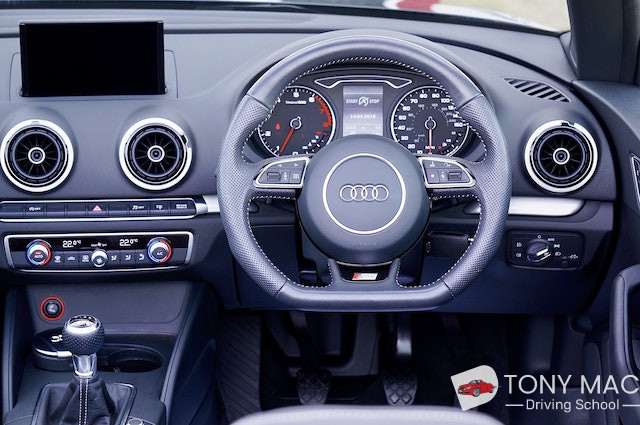Learn to Drive: A Comprehensive Guide for Novice Drivers
Driving is an essential ability that opens up a world of opportunities, from job potential customers to liberty and self-reliance. However, finding out to drive can appear intimidating for numerous amateur drivers. This guide will offer essential details about the knowing procedure, suggestions for success, and necessary understanding required to become an accountable driver.
The Importance of Learning to Drive
Comprehending how to drive is not simply about running a vehicle; it includes safety, duty, and awareness of traffic laws. Here are several reasons learning to drive is necessary:
- Independence: Driving allows people to take a trip freely and handle their schedule without dependence on public transport.
- Work Opportunities: Many jobs require a legitimate driver's license, particularly positions including travel or commuting.
- Access to Emergency Services: In times of need, having the ability to drive can supply fast access to medical care and other vital services.
- Convenience: Shopping, running errands, and taking a trip ended up being substantially easier with the autonomy that driving offers.
Secret Steps in the Driving Learning Process
Discovering to drive typically includes several vital steps that every amateur driver need to follow:
1. Understand the Requirements
Before supporting the wheel, it's crucial to be familiar with the requirements for acquiring a driver's license, which can vary by state or country. These usually consist of:
- Minimum age requirements
- Needed documents (e.g., evidence of identity, residency)
- Parental approval if underage
2. Enroll in a Driver's Education Program
Taking a formal driver's education class is useful for beginner drivers. Such programs usually include both automobile operation training and knowledge of traffic laws.
- Class Instruction: Covers traffic signs, rules of the road, driving laws, and safe driving practices.
- Behind-the-Wheel Training: Provides hands-on experience under the assistance of a licensed instructor.
3. Acquire a Learner's Permit
A learner's permit allows beginner motorists to practice under particular conditions. To acquire one, individuals need to:
- Pass a composed test on traffic laws and precaution
- Pay relevant costs
4. Practice, Practice, Practice
The most important step in discovering to drive is practice. Here, the focus should be on:
- Supervised Driving: Driving with a licensed adult can help develop confidence.
- Diverse Conditions: Practicing in numerous environments (night driving, rain, highway driving) boosts skills.
5. Prepare for the Driving Test
As soon as enough practice has been completed, the next action is getting ready for the driving test. This typically includes:
- Reviewing the guidelines of operation for the driving test
- Practicing specific maneuvers such as parking, turning, and lane changes
6. Take the Driving Test
The final hurdle will be the driving test itself. Effective completion allows people to acquire their complete driver's license.
7. Understanding of Vehicle Operations
Understanding how to run a car extends beyond simply driving. Key vehicle operations for drivers consist of:
- Familiarizing oneself with control panel controls (speedometer, fuel gauge, warning lights)
- Knowing how to carry out fundamental cars and truck upkeep checks (oil levels, tire pressure, brakes)
Safety Tips for New Drivers
Driving is as much about safety as it is about ability. Here are some essential safety suggestions every new driver ought to bear in mind:
- Always Wear a Seatbelt: Ensure that everyone in the vehicle is buckled up.
- Prevent Distracted Driving: Distractions such as texting or using a phone should be prevented.
- Comply With Speed Limits: Always follow published speed limits and change for road conditions.
- Keep a Safe Following Distance: Maintain a distance of numerous automobile lengths behind the car in front.
- Understand Blind Spots: Always inspect mirrors and blind spots before changing lanes.
Typical Challenges for Novice Drivers
While discovering to drive can be interesting, it can likewise provide obstacles. Here are some typical difficulties that newbie motorists may face:
- Nervousness: Many brand-new chauffeurs feel distressed when driving for the very first time.
- Judgment of Distance and Speed: Understanding how to determine distances and speed can take some time.
- Night Driving: Driving at night provides distinct obstacles that require additional caution.
- Weather Conditions: Rain, snow, and fog can make driving tough and must be approached thoroughly.
Frequently Asked Questions (FAQs)
Q1: How long does it take to learn to drive?
The time required to learn to drive can vary widely. Typically, it can take 6-12 months of practice to gain enough ability and confidence to take the driving test.
Q2: Do I need a driving instructor?
While it's not compulsory, a licensed driving instructor can offer important suggestions and techniques, making the discovering process smoother.
Q3: What should I do if I stop working the driving test?
Stopping working the driving test is not unusual. Qualified Driving Instructor , practice the specific areas of trouble, and schedule a retake when you feel ready.
Q4: Can I drive with a learner's authorization?
Yes, however driving with a learner's authorization normally comes with restrictions, such as requiring a licensed adult driver in the car.
Q5: What are the effects of driving with a suspended license?
Driving with a suspended license can cause extreme charges, including fines, extended suspension, and even prison time, depending on jurisdiction.
Finding out to drive is a significant milestone in one's life, representing independence and obligation. By following the actions described in this guide and prioritizing safety, novice chauffeurs can feel great as they start their journey on the road. With practice and appropriate education, driving can transform from a complicated task into a satisfying and satisfying experience.

